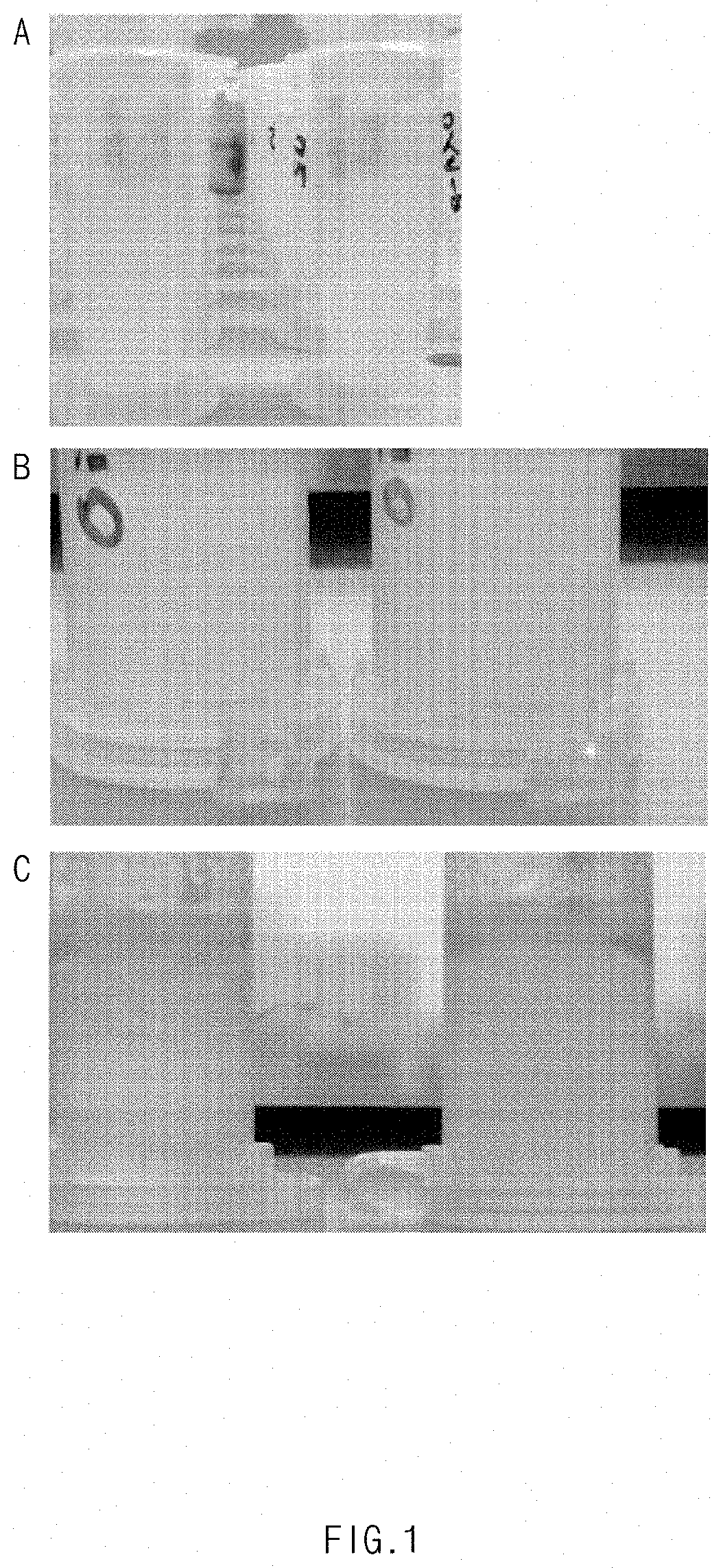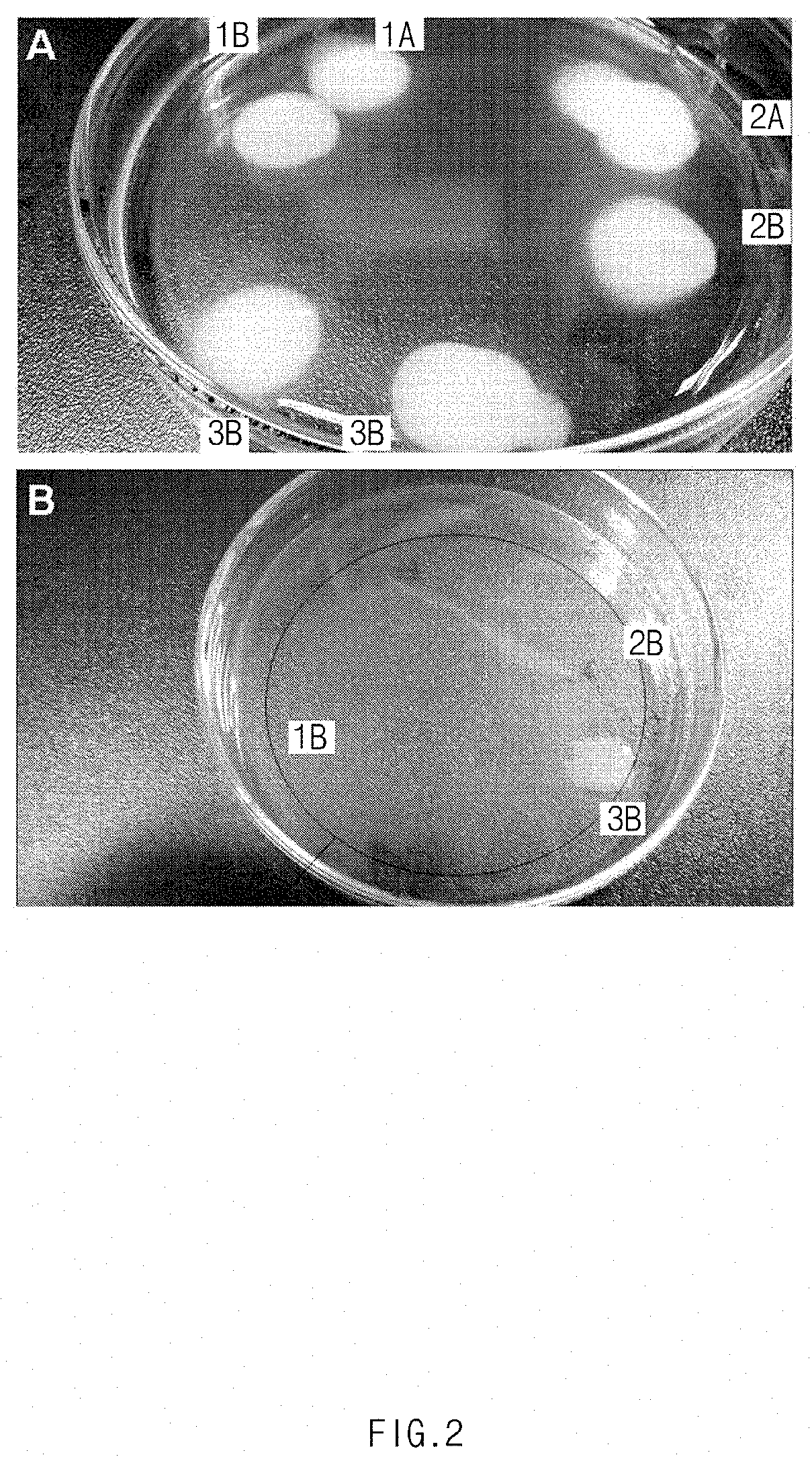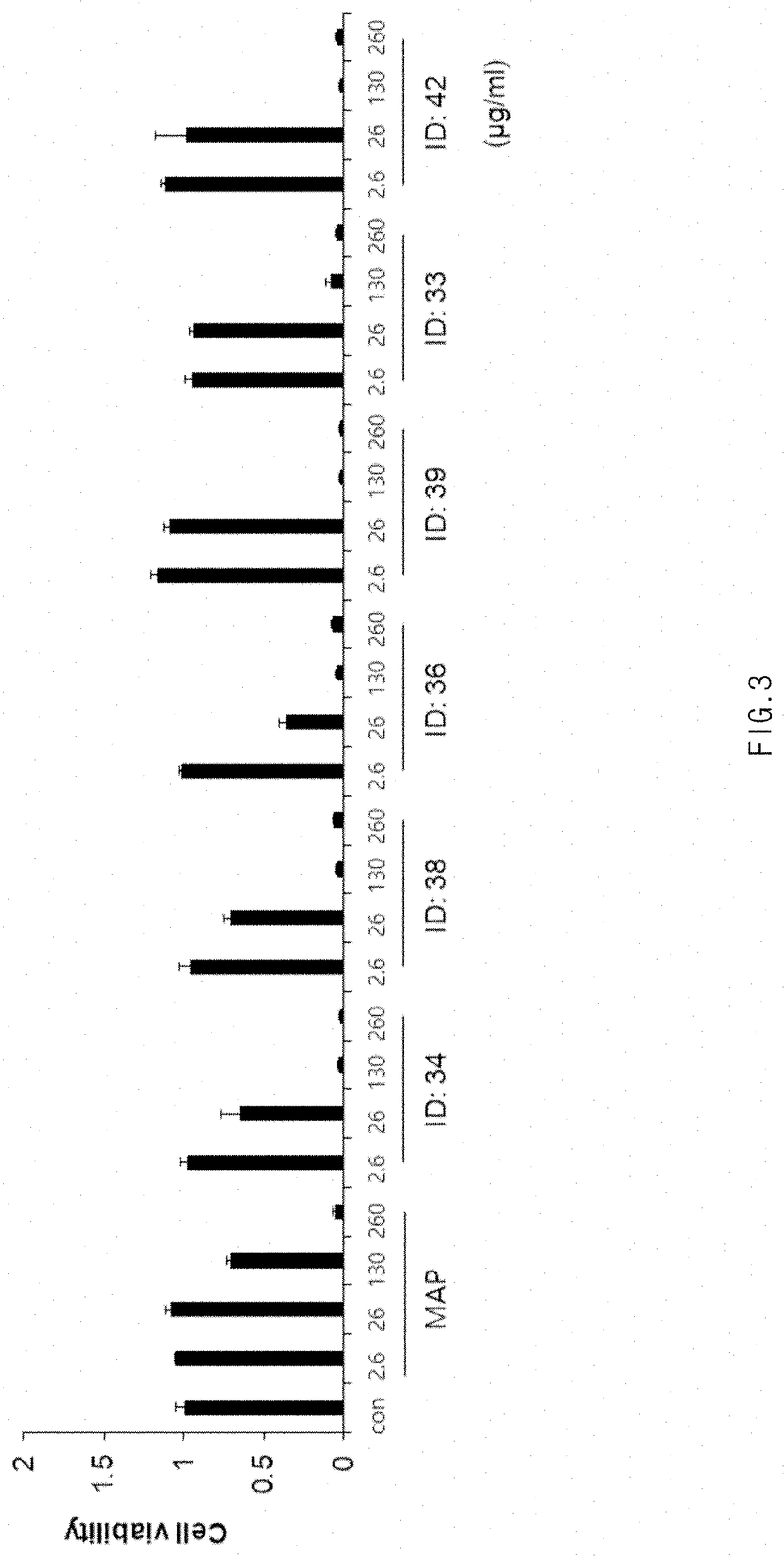Surfactant adhesive composition
a technology of surfactant and adhesive composition, which is applied in the direction of drug compositions, peptide/protein ingredients, peptide sources, etc., can solve the problems of skin cancer or atopic symptoms, high cost structure and prohibit extensive industrial applications, and achieve stable and fine phase, less cytotoxicity, and excellent adhesiveness
- Summary
- Abstract
- Description
- Claims
- Application Information
AI Technical Summary
Benefits of technology
Problems solved by technology
Method used
Image
Examples
example 1
ion of Vector for Interfacially Active Mussel Adhesive Protein
[0036]To prepare mussel adhesive protein fused with amphiphilic peptide, we design a genetic sequence to incorporate typical amphiphilic peptide at C terminus or N-terminus of mussel adhesive protein, and the genetic sequence was synthesized by Cosmogentec Co. Ltd. (Seoul, Korea). The constructed vector was transformed into E. coli BL21 (DE3), and the fused amphiphilic peptides were listed in Table 1.
TABLE 1Fusion siteAmphiphilicat musselFusionPeptideadhesivepeptideSequenceproteinAARARADADARARADADC terminus(SEQ ID No. 20)BEAEAKAKAEAEAKAKAN terminus(SEQ ID No. 21)CHWKHPWGAWDTLC terminus(SEQ ID No. 22)
example 2
on of Surfactant Mussel Adhesive Protein
[0037]2.1. Culturing of E. coli BL21(DE3)
[0038]E. coli BL21 (DE) was cultured in LB media (5 g / liter yeast extract, 10 g / liter Tryptone and 10 g / liter NaCl), and IPTG was added to a final concentration of 1 mM when the optical density of the culture solution was 0.6 at 600 nm in order to induce expression of recombinantly antimicrobial peptide fused mussel adhesive protein. The E. coli BL21 (DE) culture was centrifuged at 13,000 rpm for 4 to 10 minutes to obtain the cell pellet, and this was stored at −80° C.
[0039]2.2. Confirmation of Surfactant Mussel Adhesive Protein Expression
[0040]The cell pellet was resuspended in 100 μg of SDS-PAGE buffer (0.5 M Tris-HCl, pH 6.8, 10% glycerol, 5% SDS, 5% β-mercaptoethanol, 0.25% bromophenol blue), denatured by boiling at 100° C. for 5 minutes. For SDS-PAGE analysis, the samples were electrophoresed on a 15% SDS-polyacylamide gel and then the protein bands detected using Coomassie blue staining.
[0041]2.3....
example 3
of Tyrosinase to the Surfactant Adhesive Protein
[0043]The lyophilized surfactant mussel adhesive protein was dissolved to a concentration of 1 mg / mL in 0.1M acetate buffer containing 20 mM ascorbic acid and 20 mM sodium borate and the surfactant adhesive protein solution then saturated with oxygen by adding oxygen gas to the solution for 30 minutes. Then after the addition of 40˜1 μg of tyrosinase per antimicrobial adhesive protein, preferably 40˜1 μg per adhesive protein, it was shaken for one hour under the oxygen condition. After one hour, the chemical modification reaction was terminated by adding 5% acetic acid to the solution. The terminated surfactant adhesive protein solution underwent freezing dry to obtain lyophilized powder. Through this process, the tyrosine residues of the adhesive proteins were modified to DOPA. After the dialysis of the solution, acrylation and the degree of acrylation of protein were determined with NMR or spectroscopic analysis.
PUM
| Property | Measurement | Unit |
|---|---|---|
| Amphiphilic | aaaaa | aaaaa |
| Adhesion strength | aaaaa | aaaaa |
| Adhesivity | aaaaa | aaaaa |
Abstract
Description
Claims
Application Information
 Login to View More
Login to View More - R&D
- Intellectual Property
- Life Sciences
- Materials
- Tech Scout
- Unparalleled Data Quality
- Higher Quality Content
- 60% Fewer Hallucinations
Browse by: Latest US Patents, China's latest patents, Technical Efficacy Thesaurus, Application Domain, Technology Topic, Popular Technical Reports.
© 2025 PatSnap. All rights reserved.Legal|Privacy policy|Modern Slavery Act Transparency Statement|Sitemap|About US| Contact US: help@patsnap.com



